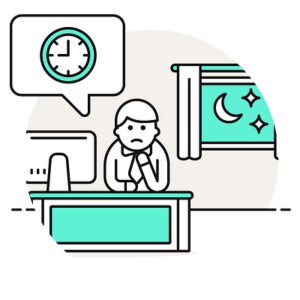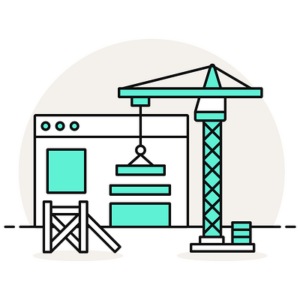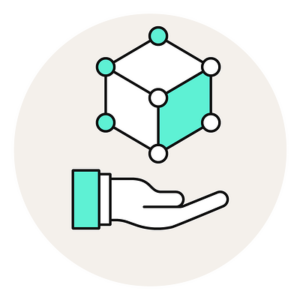The Definitive Guide To SaaS Vs Bespoke Software
What’s the difference between SaaS and bespoke software? Which option is best for your event agency? Should you invest in software at all? Your staffing software questions answered.

What are the key features to look for when considering investing in staffing software? We look at customisation, flexibility, integration, functionality, and more in this deep dive into the differences between SaaS and bespoke staffing software for the Events industries.
We guide you and your business in what to look for, what are industry best practices and the fundamental differences between the two options. We uncover the secrets of “good” software and how to ensure the longevity of any software investment you make.
Share this article
Contents
Chapter 1
Chapter 2
Chapter 3
Chapter 4
Chapter 1
What Is Staffing Software?
And why would an event or promo agency need it?
How long have you got?
Staffing Software is a broad category that covers all kinds of capabilities which include job distribution, candidate sourcing, applicant tracking, timesheet and payroll processing, shift management, onboarding, scheduling, recruitment – pretty much any aspect of staffing can be streamlined with software.
Well – sort of.
It has to be good software, otherwise, the whole process will have as much use as a chocolate teapot.
If you were to Google “staffing software” you will mostly get a lot of results for the kind of platform or tool used by recruiters or recruiting companies to find, track and place candidates. For the events and promo industries, a more specialised platform is required that better fit their needs and processes. We refer to this as Event Staffing Software. So why would an event staffing agency need specialised software?
Managing People Is Hard
You, the event staffing professional, don’t need us to tell you that. You probably have a ton of anecdotes about the ups and downs of managing event staff.
When you have a lot of people in a bunch of different locations all on the same day – logistical gymnastics are required. The problem with time-restricted, over-stressed logistical gymnastics is it is prone to human error, or f**k ups.
They happen.
Event staffing software minimises the risk of human error by streamlining the planning process. It also allows for a transparent planning process and an accountable database. We’re not saying that using event SaaS will eliminate the f**k up’s entirely, but it will definitely minimise them!
Optimise Efficiency With Automation
The landscape of staffing has changed, requiring a modern approach to match the changing landscape of the modern workforce. The rise of the gig economy – a phrase that’s been knocking around for a couple of years now – is something we are all familiar with. More and more people are choosing this way to work, either to fit around studies or a lifestyle choice, either way, the rise in casual, flexible and temporary staff has had a knock-on effect on the industry.
The events and promo staffing industry must catch up and make the most of the tech that is out there, or else be left behind, staring at yet another Excel spreadsheet whilst the rest of the world moves on.
The right staffing software will drastically reduce time-consuming admin and scheduling so that event staffing agency owners can spend their time on more fruitful tasks – such as expanding their business or taking on more hires. By automating recruitment scheduling and payroll staffing agencies can focus on delivering the event itself.
Why Events And Promo Agencies Need Staffing Software
Basically, if you’re running a large team of people, and you send them to different locations across multiple days or weeks – you need event staffing software. But how do you choose, and how do you even start to qualify all the software available?
In this guide, we are going to examine the differences between an “off the shelf” product (otherwise known as a SaaS) and building your own bespoke system. The main difference is that “off-the-shelf” is a product that you buy, “bespoke” is a product that you build. There are pros and cons to both which we will go through so you can make the right choice for your company and team.
When Choosing Between SaaS Or Bespoke The Main Considerations Are:
1. Flexibility and Customisation
2. Functionality
3. Help and Support
4. Training
5. Integration with current processes
6. Time
7. Price
Chapter 2
What Is Bespoke Software?
Is it all just about price? Discover the fundamentals of bespoke software.
Bespoke software is software built specifically to the requirements of your business and will only be used by you – i.e. no sold-on licences. You have total control of the features available in a bespoke software product as it’s designed to tackle your unique requirements. As your company grows and changes, so MUST your bespoke software – otherwise you will have spent all that time, money and creativity on a product you outgrow. This is one of the biggest mistakes made when building bespoke software. It will need updating, something businesses fail to recognise and account for when embarking on creating their own product.
Where ownership and customisation is the main draw of bespoke software it is also its biggest negative. Due to its very nature, it will carry a more hefty price tag than SaaS and will take longer to be ready for use.
Warning: Software Is Not A Website
Accepting this as fact is the biggest favour you can do yourself if you are considering a bespoke product. Building software is no easy task. It is NOT the same as creating a brochure-style website and will demand much more in terms of design, development and servers to host it. You will need to hire a great team of developers or outsource to a software development company. It is this group of specialists who will make sure what you receive is exactly what you need, that your software meets all of the requirements of the business. A really great team will understand your business needs and ask questions.
The Bespoke Low-Down
Functionality, Customisation And Flexibility
As we said above, the greatest advantage of building your own software is that it will be made to your exact needs and fit your own particular process. This in itself can be an issue if you don’t know what you need. You need to know your business inside out to even consider building a software product. You need to consider specifications for the features you are proposing and make sure you definitely need them. As long as you know what you want, why you want it and can communicate this to your dev team you will have a fully customised product that is unique to your business. But it doesn’t end there. Bespoke software (and good off-the-shelf), will need continuous updating. Your business demands will change and your software needs to be able to grow and develop with you – otherwise, you will have spent A LOT of money, and time, on a product that may be outdated before it has had the chance to really perform. You will need your tech team to continuously develop and update your software – this is another consideration in terms of time and money. Get it right and you will have a great product that serves you for years to come and can adapt as the market, and indeed the world, changes.
Integration
You will probably want your new software to integrate with other systems you’re currently using, for instance, your payroll system, possibly sales or CRM. How well it does this will be dependent on design, so this is another factor when it comes to design specs and choosing a development team.
Number Of Users
This is an area often misunderstood as a cost-saving opportunity for bespoke software. With off-the-shelf software, you may need to buy multiple licenses for your team depending on the size. When you own the software, you are the official and legal owner of the intellectual property, meaning you don’t need to pay for each user as your business grows. This may sound like a money-saving area but when put into practice, even over a long period of time, the cost of upkeep bespoke software needs negates any saving possibly made in this area.
Price And Time
There is no doubt that bespoke software is expensive, in both time and money. It will be a lengthy and costly process, there is no getting around that. It is more expensive at the beginning because you are paying for the planning, design and developmental process which will involve a team of specialists such as business analysts, UX designers and developers. This can take months to design, develop and test. The wait time, of course, depends on the size and complexity of the software you are designing. Another misconception about bespoke software is once all that work is done and you have a finished product, the costs stop there. They don’t! When you consider ongoing improvements, development costs, hosting costs and time spent training and managing the overall process, the price tag will continue to rise.
Training, Onboarding And Support
Another consideration around building your own software is training. There’s a lot more to this than you may think. For example;
Once your new product is ready, who is going to train your team to use it?
Will you require a user manual to be written to help with this process, and who will do that?
How are you going to approach the onboarding process of getting your database of temporary event staff using the software?
Who will manage support if any of your users have an issue with the software as this can be a 24/7 task?
Who will you turn to in the inevitable case of a bug in the software?
In most of these instances, you will reach out to the team who built the software to manage ongoing problems, such as bugs. This ongoing support from your specialists will incur further charges so it is important to consider and factor into budgets. There is more to building bespoke software than the upfront cost of your development team. There’s a lot of management and training time involved – we all know time is money – not understanding this can quickly lead to frustration with the process.
Considerations Summary
1. Flexibility and Customisation: fully customisable and designed to your individual needs
2. Functionality: if built properly and updated by a great dev team
3. Help and Support: not included in design cost and needs budget consideration
4. Training: not included in design cost and needs budget consideration
5. Integration with current processes: will need consideration in the design process
6. Time: will take more time than you think
7. Price: it is expensive to start and will have hidden ongoing costs and suck up a lot of your time
Importance Of Good Software – Not All SaaS Are Made Equal
Event Temps learnt the importance of shopping around and making sure they picked the right SaaS.
We spoke to Vanessa Marsh of Event Temps, who explained that the business began using a different system to Liveforce – but quickly found that not only was that system not growing with them or delivering what they needed, even worse it was hindering their ability to grow their business. This could mean death to a start-up.
As Event Temps started taking more and more bookings, even outside of their busy Autumn/Winter season they needed more and more staff. And that’s when the problems really started to manifest.
As Event Temps grew, their staffing scheduling system was not growing with them, “We saw the problem fairly quickly when we got busy” says Vanessa. “It was flawed from the beginning. It was a cheap option, it promised more than it could deliver and wasn’t fit for purpose. It was horrendous trying to keep track of Christmas staff at multiple events, on multiple shifts. We realised we needed something better.”
The shortcomings became obvious. With no simple way to keep track of hours, or breaks or a simple way of communicating with their temp staff, Event Temps vowed to find another solution before the next busy season. That was when they made the switch to Liveforce.
Chapter 3
What Is SaaS (Software As A Service)?
What are the pros and cons when it comes to adopting off-the-shelf software and which providers are leading the way?
SaaS products are off the shelf solutions that are quick and easy to set up. The software can be set up very quickly and will come with customer service and support along the way. They will be available over the internet, hosted on a remote server by a third-party provider. They will most likely be scalable, with different tiers for small, medium, and enterprise-level businesses. The products are usually inclusive, offering security, compliance, and maintenance as part of the cost. The biggest advantages of using a SaaS is that it is a cost-effective solution that is ready to use straight away.
SaaS accounts for approximately 24% of all enterprise workloads (up from 14% in 2016)
Examples Of Great SaaS You Are Probably Already Using:
There are loads of great SaaS companies out there, we rely on them daily already to send our newsletters, or arrange meetings, chat to our colleagues or keep track of our sales and marketing performance. A lot of these SaaS products are also integrated with each other! Do you use any of these already?
The SaaS Low-Down
Functionality, Customisation And Flexibility
With an off-the-shelf product, you won’t have control over the design of the product. However, it will have been designed to best-practice and will have gone through a very thorough design and UX process. So although a SaaS may not be bespoke to your exact process, it doesn’t mean you won’t be able to customise or get the best from it. These products will be updated continuously, be able to adapt to their user’s needs quickly, and will do all the work behind the scenes to stay compliant. They do all the hard work; the developing, updating, upgrading, redesigning etc, so you can get on with using the product to grow your business.
Good SaaS will look to its users for feedback and should be regularly asking for your opinions. The functionality should be reliant upon its users and have the flexibility to adapt to their needs. Look out for staffing software that is making weekly or monthly feature updates and communicating with its users. A good place to look is in reviews, testimonials and case studies about the company.
Good staffing software will have a certain level of customisation. You should be able to customise it with your own branding, customise forms and other options to fit your particular needs, upload your own contracts if necessary and pick and choose communication levels.
Look for reviews on their support team – a good Saas should be able to find workarounds, bring new features or update its product to help make it as useful and efficient as possible.
Number Of Users
SaaS is usually sold on licenses and users – therefore the more users you will need to use the SaaS, the higher the price tag. When you consider this remember it will typically include training, onboarding of new staff in the future, ongoing support and hosting, as well as the aforementioned development of the product, compliance etc, you get a huge amount of value from your monthly subscription!
Price And Time
SaaS products are more competitively priced than bespoke solutions and are able to be used immediately. The development costs are spread across a large number of users so the cost to you is much much less than building it yourself. There will be a license fee to pay, or a subscription charge, but usually nothing more. All the development has already been done, so all you need to do is sign up and start using it. Marketplace competition also keeps costs low and functionality high. The greatest difference between bespoke and off-the-shelf solutions is the waiting time.
Ownership
With a SaaS you, quite obviously, don’t own it and it will be used by many other companies. One important point is data – who owns the data? Once you have uploaded your database to a SaaS and you no longer wish to use that service, can you get your data back? Can you delete your data? These are important to consider and check out when choosing your off-the-shelf software. SaaS companies make sure they are GDPR compliant – something that can go against bespoke as legislation changes the product will need to be updated. SaaS companies take care of all that behind the scenes.
Competitive Advantage
Engaging with a platform that is well known and respected could give your staffing agency the competitive edge over those without. You could spend thousands of pounds and months of hard work developing your own bespoke software, just to be out-tendered by another staffing agency that uses a reputable and well known SaaS.
Training, Support And Onboarding
A SaaS product should come with user support, training and onboarding. These could be in one-to-one training sessions, or online support, online guides and training videos etc. With multiple users, it will be commonplace for there to be a support team available to answer questions and respond to bugs quickly. Online training makes it easy for employees to gain access to training as and when they need it. They can utilise these resources at their own pace and refer back to them independently. All of this will save a huge amount of money (and time) compared to a bespoke product. With bespoke, your company would have to provide all of this every time you take on new staff or gain a new user. Think about not only your full-time admin users but also your event staff using the app, your agency may have hundreds if not thousands of crew to potentially train on how to use the SaaS you choose – that is a lot of time (and money) if you need to provide in-house!
Longevity
Another consideration is longevity. A SaaS will have a dedicated tech team updating and improving the product, that service will be included in the license fee or subscription cost – this means you will get upgrades and updates for free. These updates are based on industry-wide feedback, which helps you stay in line with your peers and competitors. With bespoke software, you won’t get anything new unless you pay for it to be built. With SaaS, if your business changes and the solution no longer serves your needs, you just cancel your subscription!
Top Tip
Get involved with a SaaS from early on, that way you can be involved in the development process and have a say in the future of the product.
Considerations Summary
1. Flexibility and Customisation: will not be designed specifically for your company or its needs, but should have a certain level of customisation
2. Functionality: a product built to serve a large number of businesses will have functionality at its forefront
3. Help and Support: included in the cost
4. Training: included in the cost
5. Integration with current processes: most SaaS are integrated, but this needs consideration when choosing a product.
6. Time: ready to use straight away
7. Price: cost-effective
Chapter 4
Conclusions
We hope this has helped to clear some of the mystery around software and whether to go down the bespoke route or engage a SaaS.
The key differences are customisation and cost – a bespoke product you commission will be built to your exact needs and requirements BUT will cost a large amount of upfront and ongoing costs in both cash and time. A SaaS sometimes requires a small amount of compromise. With that comes a consideration for cost and time. A SaaS is a fully developed, up and running product you can use straight away at a fraction of the cost of a bespoke product.
It will be regularly updated based on industry best-practice and will maintain compliance at no extra cost. Bespoke software will bear a heavier price tag and will require at least six months to design, build and test.
Bespoke
- Made to your exact requirements
- Costly
- Requires development time
- No support or customer service included
SaaS
- Regular updates and upgrades
- Competitively priced
- Ready to use straight away
- Support, customer service and training included
- Always compliant
- Follows best practices
The most important factor when going bespoke is to choose your tech team wisely. Your product will only be as good as they are.
With a SaaS make sure you shop around, take your time with demo’s, perhaps take advantage of a free trial before you commit to buying.
Whichever route you decide to go down, good staffing software will help propel your event staffing business to new heights and keep your agency firmly ahead of the curve.






